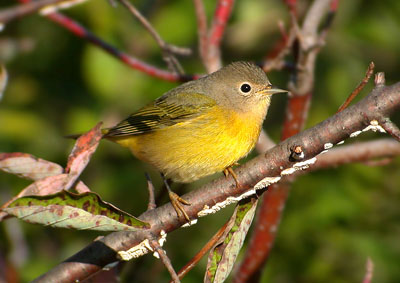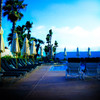
(click on image for larger version)
A reader writes:
"I really enjoy looking at your pictures on your blog. You seem to put a lot of thought into good composition/light. I was curious as to the difficulty you have of taking pictures of warblers, etc. with your digiscoping setup. I am not too keen on hauling around 25lb of camera equipment. I like to bird first and picture take second. And the weight factor makes me lean toward digiscoping. Thanks for your reply."As a birder, I think you're right on the mark by considering lighter weight digiscoping equipment versus conventional D/SLR and big lens gear. Of course there are pros and cons to each, but I'll save that for a future post and address your question regarding difficulty with small birds.
They are very tough, aren't they? Perhaps the greatest challenge digiscoping small birds is acquiring and following them via the LCD viewfinder on the digital camera. A strategy I like to employ to overcome this is to repeatedly use the same location; one with good lighting, open perches and visual markers - a veritable studio in the field.
You might be surprised to learn how many birds in my digiscoping gallery were photographed on or near the very same branch! It will work further to your advantage if an area you've selected draws in the migrants - habitat that naturally encourages birds to visit. As a birder, you may already have in mind particular areas you know birds frequent during migration.
Once I've setup my digiscoping gear, I'll focus on a particular branch and practice moving the scope around to nearby open sticks and twigs - establishing a sense of how much relative movement needs to be made to each one. While doing so, I'll take note of the various color tones of different branches or if there are any distinguishing visual markers like a particular leaf, branch fungus, etc.
I'll patiently monitor birds as they move in and out of the area until one gets close to one of my visual markers. The practice drill of memorizing relative positions of markers and gauging how much the scope needs to be moved to each - guiding you to the bird - will help you capture more hits in the field. The more often you visit the same areas, the better you'll get. By having several such areas unique in habitat and visiting them at different times during spring/fall migration, you will collect a larger species library of images.
Nashville Warbler image © 2005 Michael McDowell

















